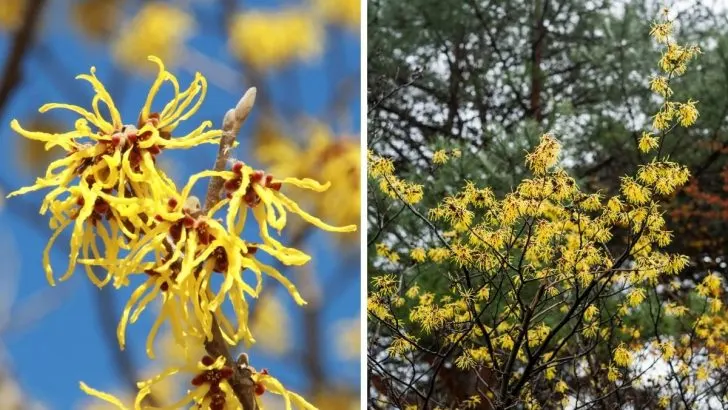Witch hazel is a winter wonder, illuminating even the gloomiest garden corners with its vibrant, fragrant flowers. As one of the few plants that dare to bloom in winter, it’s like nature’s little reminder that spring is always on the horizon.
Growing witch hazel in pots is not just feasible; it’s a rewarding endeavor that’s relatively straightforward. While your garden may be modest, witch hazel doesn’t demand vast landscapes to make an impression.
Its hardy nature, surviving even the harsh winters of US hardiness zone 3, ensures that these shrubs can flourish almost anywhere. However, to truly reap the benefits of their enchanting blooms, a few container gardening principles will be your guiding stars.
Picture this: a dull winter landscape suddenly bursting with the spider-like glory of golden, orange, or red witch hazel blooms.
Not only do they add color, but their spicy fragrance also lingers in the air, turning your garden into a sensory delight.
Ready to enhance your botanical repertoire? Here’s your comprehensive guide to pot-growing witch hazel and ensuring they flourish through the frosty months.
Getting Started: The Basics of Pot Culture
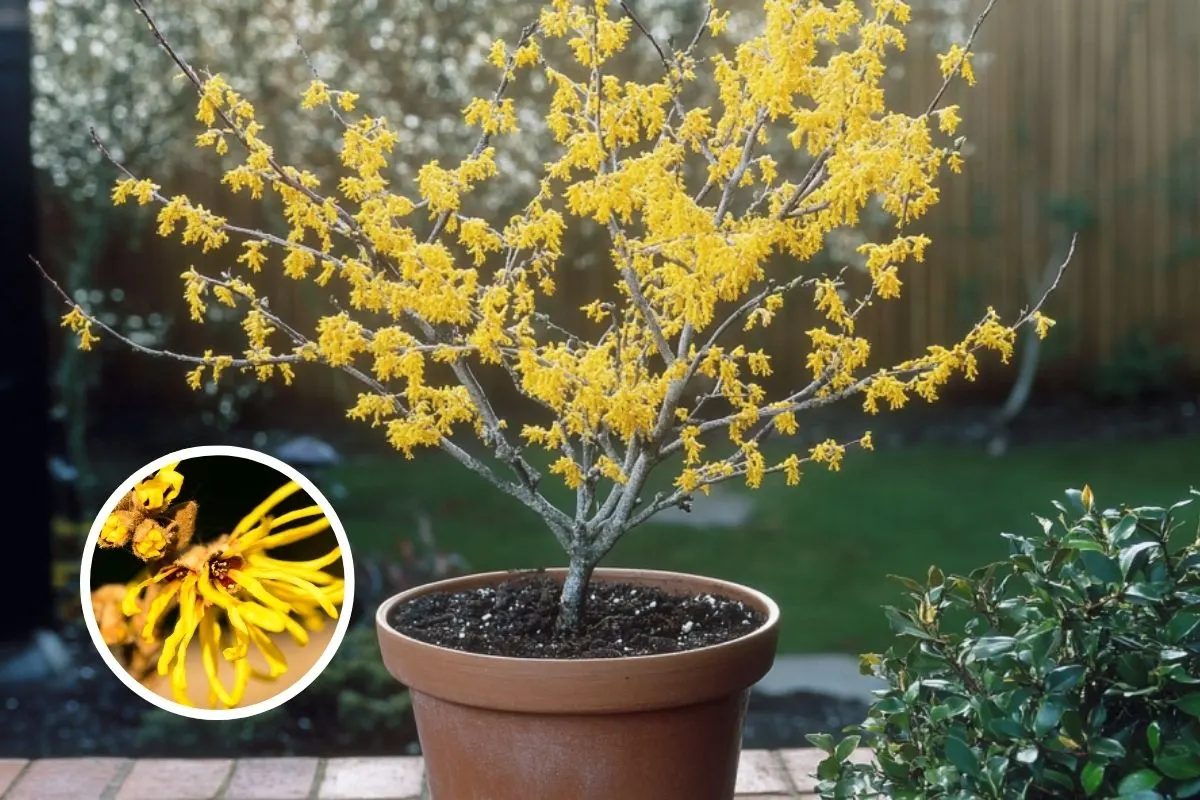
Imagine a snowy garden, dotted with pots that seem to glow with life. Witch hazel is your ally in creating this picturesque winter scene.
These statement shrubs, with their show-stopping winter performance, thrive in containers, and moving them around is as simple as it is strategic. Position them prominently, and let their blossoms take center stage.
Selecting the Perfect Pot
Size matters—especially when it comes to pots! While witch hazels can grow up to 30 feet in the wild, a container naturally curbs this growth.
Choose a pot that’s about six inches wider than the one it arrived in. This gives your plant room to grow without overwhelming it with too much soil space. Just like a snug sweater, the right fit makes all the difference!
Finding the Right Spot
Location, location, location! Witch hazel appreciates a warm embrace from the sun but won’t sulk in a partly shaded spot. Aim for a position with a healthy dose of sunlight, ideally at least three to four hours daily.
Sunshine is their secret ingredient for producing those breathtaking flowers, so place your container accordingly.
Soil, Water, and Nutrients: The Vital Trio
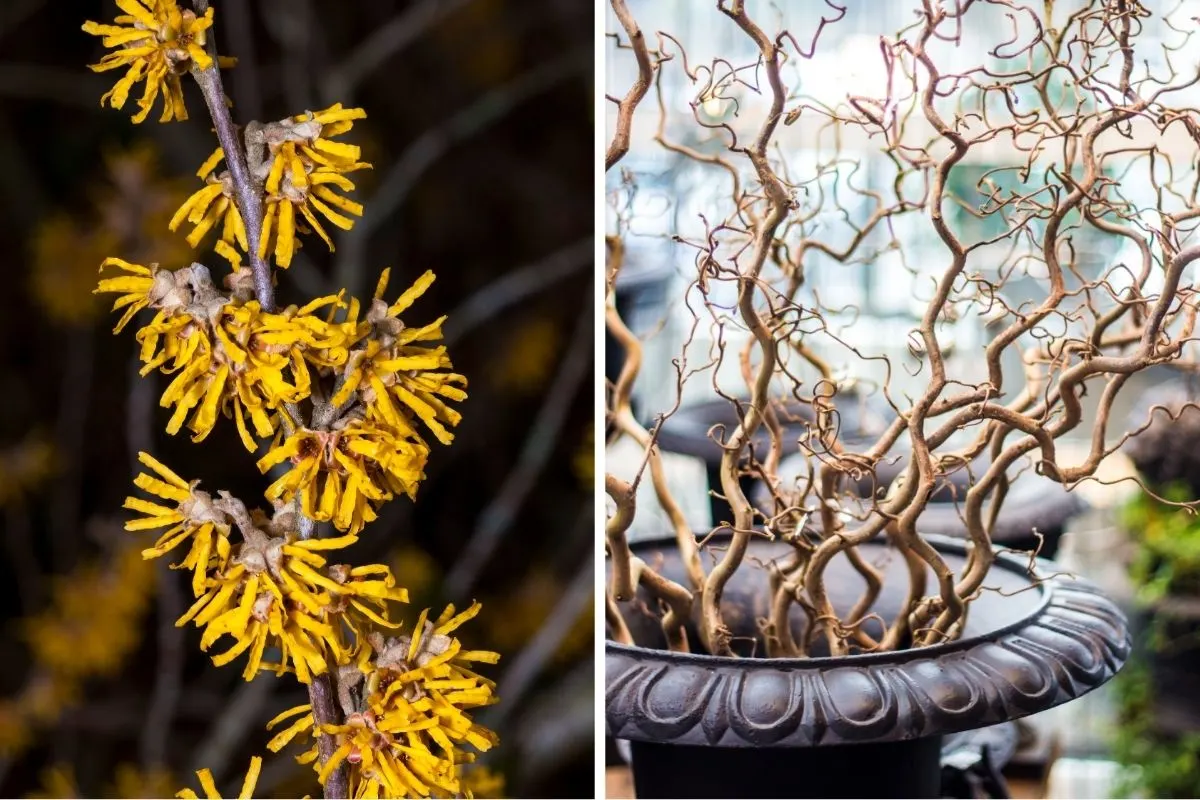
Your witch hazel’s vitality hinges on the right mix of soil, moisture, and nutrients. Think of it as crafting the perfect recipe, where each ingredient plays a crucial role.
Soil: The Foundation of Growth
A rich, loamy, slightly acidic soil mix sets the stage for success. Mimic their natural woodland habitat with good-quality organic potting soil.
Blend in some mulch to enhance water retention and nutrient content. A well-prepared soil bed is like a cozy blanket your witch hazel will love snuggling into.
Watering Wisdom
Consistent moisture is key, but avoid turning your pot into a small swamp. Witch hazels thrive with regular, deep watering during the active growing seasons of spring and summer.
A watering can or two every few days should suffice in dry spells. Remember, proper drainage is as essential as the water itself to prevent root rot.
Feeding Time
Even hardy plants like witch hazel appreciate a little extra help. During the growing season, a monthly dose of balanced liquid fertilizer will make your witch hazel beam with health.
Like a good multivitamin, it ensures they have everything they need to thrive in their confined quarters.
Maintaining Your Witch Hazel’s Splendor
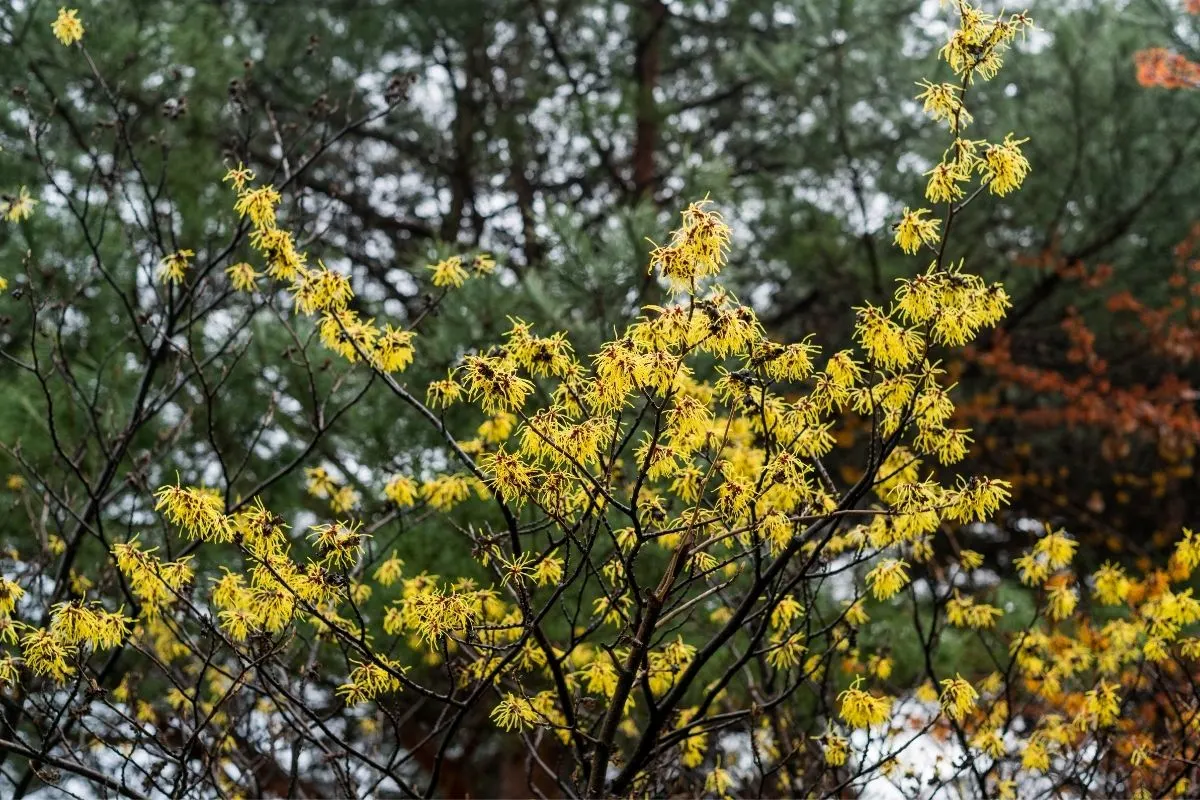
While witch hazels are relatively low-maintenance, they still need some TLC to keep them blooming gloriously.
Light Pruning
Keep your witch hazel looking its best with occasional pruning. Aim to remove any dead, diseased, or tangled branches, but resist the urge to over-prune.
These shrubs have a modest growth rate of 10-24 inches per year, and when container-grown, they slow even further. Maintain a natural shape that showcases their unique character.
Repotting for Renewal
Think of repotting as a fresh start. Every three years, when the blooms fade and spring whispers its return, it’s time to refresh the soil.
Choose a pot four to six inches larger than the current one and handle the rootball with care to minimize stress on your plant. A little room to grow, coupled with fresh soil, gives your witch hazel a new lease on life.
Recommended Witch Hazel Varieties for Pots
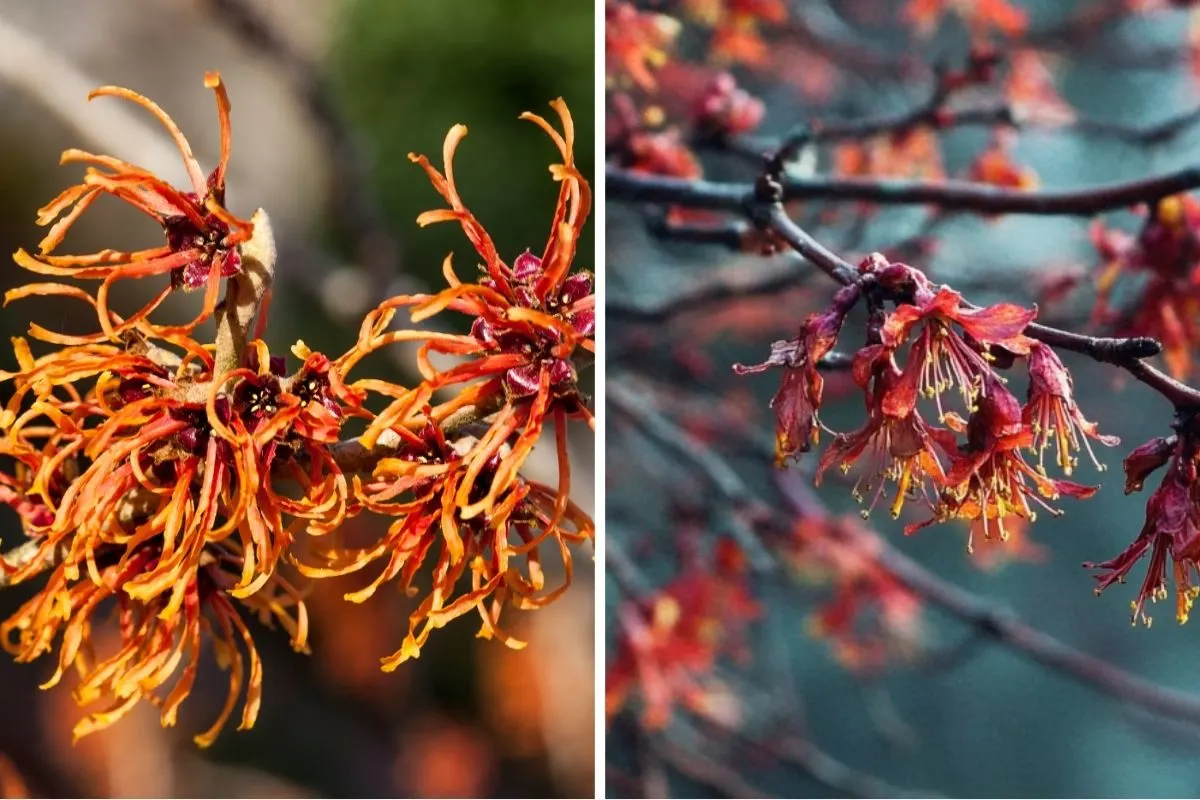
Not all witch hazels are created equal when it comes to container gardening. Opting for dwarf or compact varieties can save a lot of space and prevent potential transplant shock.
Little Suzie: The Compact Marvel
North American witch hazel ‘Little Suzie’ shines as a pot-perfect choice, maxing out at a delightful five feet. It’s the perfect petite powerhouse for spaces that need a dash of color and scent without the looming presence of larger species.
Hamamelis vernalis: The Late Bloomer
Hailing from the Ozark Mountains, Hamamelis vernalis waits until March before unfurling its orange-scented flowers. This native gem suits containers beautifully, offering a slightly delayed floral spectacle to extend your garden’s bloom time.
Arnold Promise: A Dwarf Delight
This Asian beauty, Hamamelis x intermedia ‘Arnold Promise’, remains petite at 10 to 12 feet and is a winter wonder with its bright yellow blooms. Ideal for smaller yards and pots, it infuses your garden with cheer when everything else is hibernating.
FAQs

Do I Need to Protect Witch Hazel in the Winter?
Fear not, for witch hazels are hardy warriors against winter’s chill. Most varieties withstand the frigid conditions typical of US hardiness zones 3 and 4.
However, for younger plants, consider covering with a frost protection kit if heavy snowfall or prolonged frosts are forecasted. It’s a small effort for your plant’s comfort and longevity.
Are There Any Witch Hazel Pests or Problems to Be Aware Of?
Generally, witch hazels are relatively carefree, facing minimal pest and disease challenges. Aphids and powdery mildew are occasional nuisances but rarely cause severe harm.
Organic remedies suffice if issues arise. Keep an eye out for rabbits and deer, who might take a liking to the bark, and consider installing a protective cage to thwart their advances.
Embrace the magic of witch hazel this winter, and let their enchanting blossoms light up your garden like nature’s very own fireworks display.
They’re not just plants; they’re a winter celebration waiting to happen!

